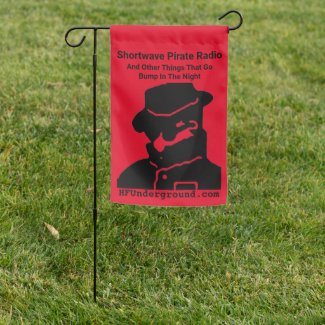As you may know, the HFU has a propagation page, with lots of nifty plots:
https://www.hfunderground.com/propagation/One set of them are foF2 plots from ionosondes, they can be found here:
https://www.hfunderground.com/propagation/#skipzoneThere's several of them in various parts of the US (there are also some overseas, not displayed on the page). You can view all of them on my DX ToolBox app, btw, which is available for Windows/Mac:
https://www.blackcatsystems.com/software/ham-shortwave-radio-propagation-software.htmland iOS:
http://phobos.apple.com/WebObjects/MZStore.woa/wa/viewSoftware?id=492113368&mt=8&at=11lb5XI find these plots to be perhaps the most useful real time gauge of propagation conditions, especially for the 43 meter band. So what's being measured? foF2 is the highest frequency that will be reflected from the ionosphere if directed straight up (which then gets reflected back down to the transmitter site). Any frequencies higher than this just go off into space(*) (mostly, there can still be some reflection, but signals are usually extremely weak).
If you think this sounds like NVIS (Near vertical incidence skywave) propagation, you're correct! And that's the typical mode most stations in the 43 meter band use, especially in the daytime, but also at night, for non-DX propagation. As the distance between the transmitter and receiver increases, the angle becomes less than 90 degrees (perpendicular) and frequencies higher than foF2 can be propagated. This can be computed with simple geometry, if you know foF2 and the height of the F2 layer (also displayed on a graph next to the foF2 plot) you can compute the angle and then the skip zone distance around the transmitter site. There's actually a calculator on the page to do just that. At large distances, propagation on the higher bands (20 and 10 meters for example) becomes possible.
The foF2 plots have lines with three different colors. The blue line is for today, the red line is yesterday, and the green lines are several previous days. So look at the blue line to see what the current foF2 value is. The other lines are useful to see past trends. Assuming the solar activity has not drastically changed from yesterday, today's plot usually follows it, with some wiggles. An increase in solar flux (due to more sunspots) will cause an increase in foF2. Note that this is independent of the K and A index (although they of course are affected by solar activity as well). For good propagation, we want high foF2 values, the higher the better.
There are both diurnal and seasonal trends. Right now, the typical pattern is for foF2 to fall at night (which makes sense, UV from the Sun is not reaching the ionosphere above us, so it is de-ioniziong). Then at sunrise, it starts to increase. It reaches a peak around local sunset, currently 0000 UTC here on the east coast. Lately the peaks have been around 7 MHz - which means 43 meters is open for business. Of course you can check the current values to see what is happening on a particular day.
Also consider that what's important is not the foF2 value at your location or the transmitter site, but rather between those two locations, where the signal gets reflected (assuming just one hop). But there's only a few ionosondes to choose from, so selecting the one nearest to your QTH is usually good enough. Also note how the value varies with latitude. Ionosondes further south report higher values - as the Sun is higher in the sky, causing increased ionization. This is why propagation, especially on the higher bands, is usually best in the tropics, the Sun is highest there, year 'round.
Here's an example plot, from Wallops Island Virginia from last night. I use this site as it is closest to my QTH:




